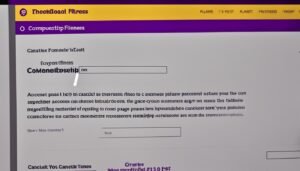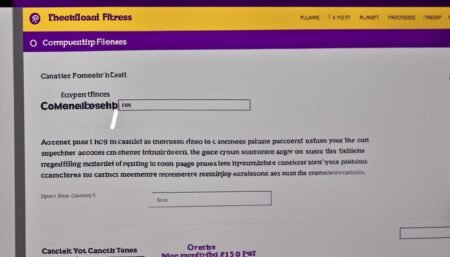Do you remember the moment you decided it was time for a change? That very day you chose to walk a new path towards better health and happiness. Whether you’re tying your running shoes or starting your first squats, beginning a fitness journey feels exciting and a bit scary1. Many others feel the same mix of emotions as they step into a healthier lifestyle every day, driven by the hope of becoming their best selves.
As a beginner, you might find tips and advice spread out everywhere. Let’s make it simple. Knowing that maintaining a healthy weight is crucial to avoid heart disease, diabetes, and obesity is key1. Everyone’s journey is different, but a common goal is to aim for 150 minutes of physical activity each week. This helps strengthen your body and build resilience1. With this in mind, beginning your workout seems less intimidating and more like a series of small wins.
Starting this adventure is exciting because of all the resources available to you. The NHS Better Health website offers over 100 healthy recipes and lots of free exercise videos1. From dance workouts to yoga sessions, these resources are here to support you. Each exercise, meal, and step forward strengthens your health and wellbeing.
Key Takeaways:
- Embrace the beginner’s mindset with open arms and acknowledge the emotional rollercoaster.
- Utilize BMI as a starting indicator to track your healthy weight journey.
- Commit to the recommended 150 minutes of exercise per week for meaningful progress.
- Incorporate a mix of resources such as nutritious recipes and fitness videos to keep things fresh and engaging.
- Aim for a sustainable weight loss of 1 to 2lbs per week to ensure long-term success.1
Understanding Weight Loss and Exercise
The journey of weight loss is closely linked with physical activity. This makes it a key factor in successfully losing and keeping weight off. As you look into getting started with exercise, it’s important to know that beginning an exercise routine for weight loss is part of a wider plan. Regular physical activity is essential not just for losing weight at the start but also for keeping a healthy weight over time.
The Role of Physical Activity in Shedding Pounds
Studies show that being active regularly can lower the risk of chronic diseases like type 2 diabetes, heart attacks, and strokes2. Starting to live an active life might seem hard, but it’s a crucial step for losing weight through exercise. Remember, it’s never too late to start. From brisk walking to playing basketball, all types of exercise help in creating a calorie deficit necessary for weight loss2.
Combining Diet and Exercise for Optimal Results
Mixing a healthy diet with your exercise routine for weight loss leads to great outcomes. Regular physical activity lowers the risk of heart disease and diabetes, apart from helping with weight loss2. Aiming for 150 minutes of moderate activity or 75 minutes of intense activity each week is advised. This shows that working on both diet and exercise is crucial for losing weight2.
Maintaining Weight Loss with Regular Workouts
The amount of exercise needed to lose weight varies from person to person2. For ongoing weight control, it’s vital to combine a lot of physical activity with a healthy diet. Activities like swimming or doing light yard work help burn calories, maintaining your fitness success over time2.
| Intensity Level | Examples | Weekly Duration for Healthy Weight Maintenance |
|---|---|---|
| Moderate-Intensity | Brisk walking, Light yard work | 150 minutes |
| Vigorous-Intensity | Jogging/Running, Competitive sports | 75 minutes |
Creating Your Weight Loss Workout Plan
Starting a workout plan for beginners is a big step towards a better, healthier you. Learning the basics of a good workout plan is key. Your main aim should be to do aerobic activities for at least 150 minutes weekly, or choose rigorous exercises for at least 75 minutes each week3.
For better health, try to do more than 300 minutes of moderate activities per week3.
Don’t skip strength training as it’s essential for muscle building and boosting metabolism. Work out all your major muscle groups twice weekly3. But remember, increase your activity slowly. No more than 10% more each week to avoid hurt3.
As you make your unique exercise routine for weight loss, add different activities. This is called cross-training and it keeps things fun3. Also, try high-intensity interval training. It gives you quick, powerful workouts with breaks in between, burning more calories faster3.
| Activity | Frequency | Intensity | Duration |
|---|---|---|---|
| Aerobic Exercises | Daily | Moderate to Vigorous | 150 to 300+ minutes/week |
| Strength Training | 2+ days/week | Moderate to High | Varies per session |
| High-Intensity Intervals | 1-3 days/week | High | Short bursts with rest |
Check how you’re doing every six weeks to see if you need to change your workout plan for beginners3. Add stretch time and days to rest for a balanced approach, helping you stick with your weight loss exercise plan3. Using fitness apps or trackers can help you monitor your wins3.
When planning your workout, eating well is just as important. Every move, every lift, and meal brings you closer to your weight loss goals. Start with hope and let every drop of sweat show your dedication to becoming healthier.
How to Start Working Out to Lose Weight
Starting your fitness journey needs a smart plan, especially for losing weight. Regular workouts help you not just lose weight, but also get healthier. They make your brain sharp, lower disease risk, and strengthen bones and muscles2. Aim to add 150 minutes of medium-paced activities to your week3. Options like fast walking, simple yard work, and relaxed biking are good starters.
Getting started with exercise begins with small, realistic goals. Follow the CDC’s advice to start with short, 5-minute workouts to build a habit gradually4. Step by step, you should work up to 30 minutes of moderate exercise, five days a week. This can help you stay fit or lose unwanted weight4.
When looking at beginner tips, choose simple moderate exercises. They’re great for burning calories and keeping the weight off2. To lose more weight, try harder exercises like running, sports, or rope jumping2. The more intense the workout, the more calories you burn.
Don’t forget about strength training when you start working out. It’s crucial to work all major muscle groups twice a week3. Strength training not only complements aerobic exercises but also boosts metabolism. This helps you burn more calories, even when you’re not working out.
After six weeks into your new exercise plan, check your fitness levels3. Then, keep checking every few months. This helps you see your progress and adjust your plan if needed. Embrace these tips for beginners and remember: Every big journey starts with a single step, or in this case, a single rep!
Maximizing Your Gym Routine for Weight Loss
Starting a weight loss journey means finding the best workouts and eating right. It’s important to eat meals that give you energy and help you recover after exercising. Eating carbs at the right times boosts your energy for workouts and helps muscles recover. This is crucial for effective workout performance5.
Choosing the Right Exercise
For weight loss, mix cardio and resistance training. This burns calories and builds muscle, increasing metabolic rate5. Staying hydrated boosts your performance and helps with recovery. Drink 2 to 3 cups of water before and keep drinking during workouts5.
Building Muscle to Boost Metabolism
A good beginner’s workout plan focuses on building muscle. This requires a lot of energy, which helps burn more calories. Building muscle also increases metabolism, aiding weight loss. Eating carbs and protein within two hours after a workout is key5.
Combating the Plateau with Mix and Match Workouts
Varying your exercises can stop workout plateaus. Mixing workouts engages different muscles and makes gym time fun, aiding weight loss. To fuel varied workouts, eat a small snack or meal 1 to 3 hours before. This keeps you ready without feeling heavy5.









